The National Gallery in London: Where to Start?
Having lived in London for the past three years as an art lover, I have had more than my fair share of questions about where to “start” at the...
Sophie Pell 3 February 2025
22 April 2024 min Read
The six permanent collections at the Museum of Montserrat near Barcelona house over 1,300 art and archeological objects. From an ancient Egyptian sarcophagus dating back to the 22nd century BCE to contemporary works like a 2010 Sean Scully painting, they encompass centuries of human civilizations and artistic expressions.
The Museum of Montserrat features works from El Greco, Caravaggio, Rusiñol, Casas, Picasso, Dalí, Monet, Sisley, Degas, Pissarro, Chagall, Braque, Miró, and many more. It is a must-go place in Barcelona for art lovers, and the same applies for the famous Montserrat monastery on top of the mountain!
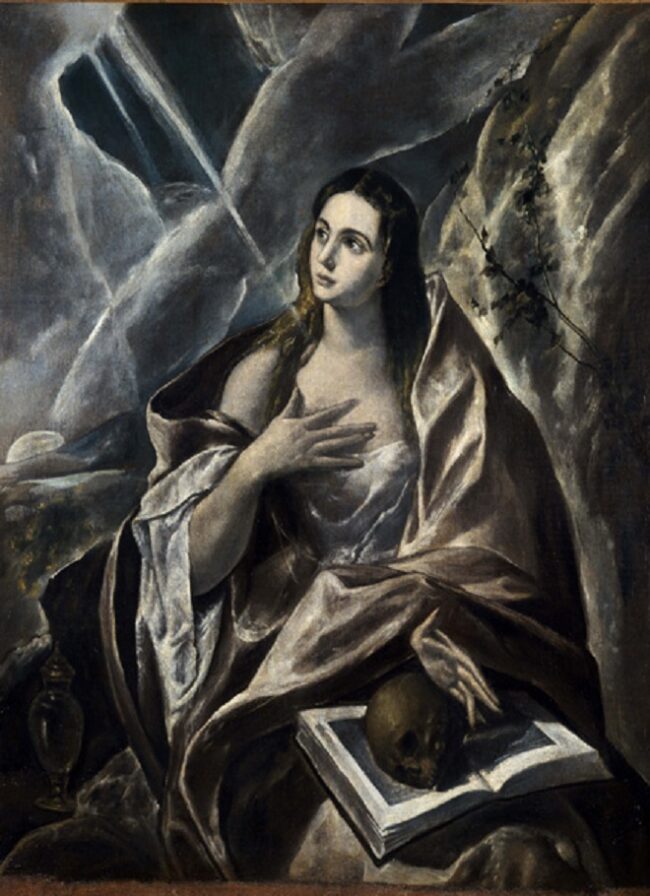
Domenikos Theotokopoulos “El Greco,” Penitent Magdalene, 1576-1580, Museum of Montserrat, Barcelona, Spain.
A piece from El Greco in the “Paintings from the Thirteenth to the Eighteenth Century” collection demonstrates how art can transcend geographical boundaries. Originally a Greek artist studying Byzantine art, El Greco later took influence from Mannerism in Italy to make art that prioritizes composition, skillfulness, and artificiality in place of the harmony and proportion from the Renaissance period.
Penitent Magdalene exemplifies his eclecticism with a heavy emphasis on the human subject and an unconventional color palette. There is a Mannerist tension between the human subject and the glaring rays of sunlight, while Saint Magdalene’s hand sign is classic El Greco.
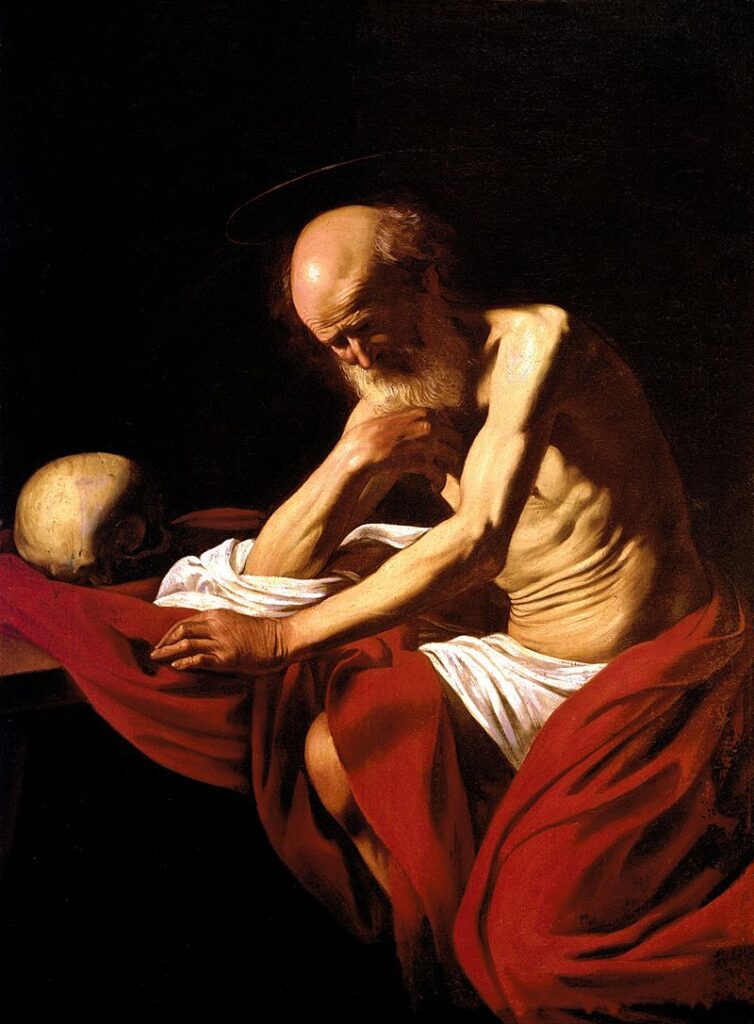
Michelangelo Merisi da Caravaggio, Saint Jerome in Meditation, 1605, Museum of Montserrat, Barcelona, Spain.
Three of the four authentic Caravaggio works in Spain are housed in Madrid. However, the one proudly displayed in Montserrat captures the essence of Caravaggio’s talent as a Baroque painter who revolutionized the art world by developing chiaroscuro, an Italian technique contrasting light and shadow to create a sense of depth.
In this portrait, the technique mentioned throws light on the subject’s mental state. It foregrounds Saint Jerome, especially the way he holds his chin in one hand as a gesture of contemplation. The skull beside him, half in shadow, implies the transience of life.
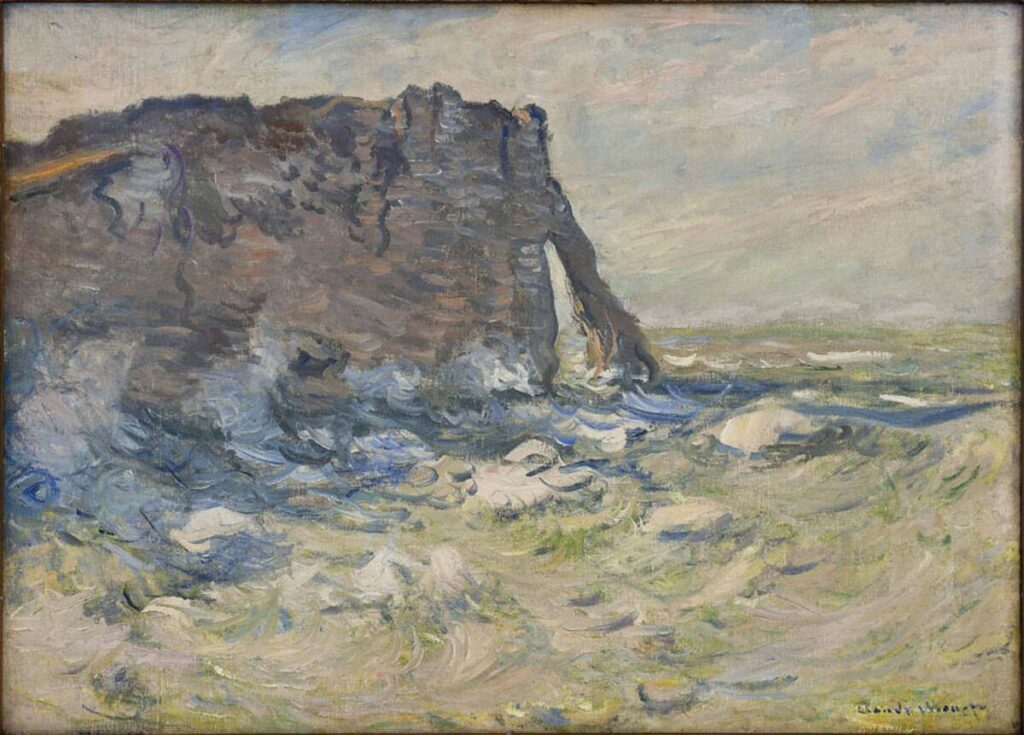
Claude Monet, Falaise et Porte d’Aval Par Gros Temps, 1883, Museum of Montserrat, Barcelona, Spain.
The Museum of Montserrat also contains an artwork by the French Impressionist Claude Monet set in 19th-century Étretat, then transitioning from a picturesque fishing port to a touristic resort. In January 1883, Monet traveled there to complete multiple canvases for an upcoming exhibition, only to have his stay cut short by bad weather. He finished some plein–air paintings, nevertheless. One of them was Falaise et Porte d’Aval par gros temps, featured in the museum’s collection of modern paintings.
As its title suggests, this piece is in direct conversation with the elements. It belongs to a series of paintings portraying the site across various lighting and times of the day. Another work from this series is Les Falaises à Étretat.

Santiago Rusiñol, Café des Incohérents, Montmartre, 1889-1890, Museum of Montserrat, Barcelona, Spain.
In Montserrat, you will also find artworks from Catalan artists like Santiago Rusiñol, who is known for spearheading the Catalan Modernisme movement. A painter, poet, journalist, collector, and playwright celebrated for his multifaceted talents, Rusiñol moved to Paris in 1888 and spent seven years there, living in Montmartre with his friend and fellow artist, Ramon Casas. This compelling artwork is Rusiñol’s take on the mood of the Parisian café.
Rusiñol unveils the nuanced dynamics of social interaction and individual demeanor. The characters he portrayed seem both relaxed and engaged in their own thoughts. Rusiñol’s work overall expresses a melancholy and a sense of solitude. These emotional undertones stem from his introversion and mental anguish, which he masked with appearances of vivacity.
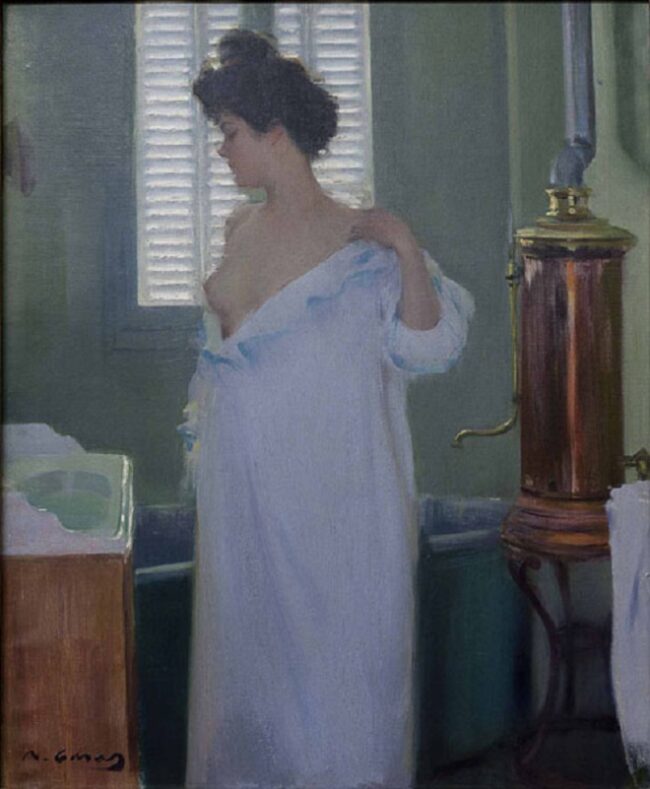
Ramon Casas, Before the Bath, 1894, Museum of Montserrat, Barcelona, Spain.
Ramon Casas was a portraitist of Catalan Modernisme. His art was also inspired by his experience in Paris and Impressionism, among other art movements he encountered there. In this piece, Casas portrays an intimate domestic scene through a serene moment preceding a bath. He portrayed the model, who the museum identified as Louise Hortense Boisguillaume or “Madeleine” from the eponymous painting, looking down in contemplation. Yet the picture still captures the attention of the viewer. It is hard to neglect the air of tenderness, with a warm and muted background that bathes the room in tranquility, as well as the domestic elements it contains. Moreover, Casas did not overlook details, even the shimmer on a small mirror or the copper. Both are crucial elements to the overall homely atmosphere.
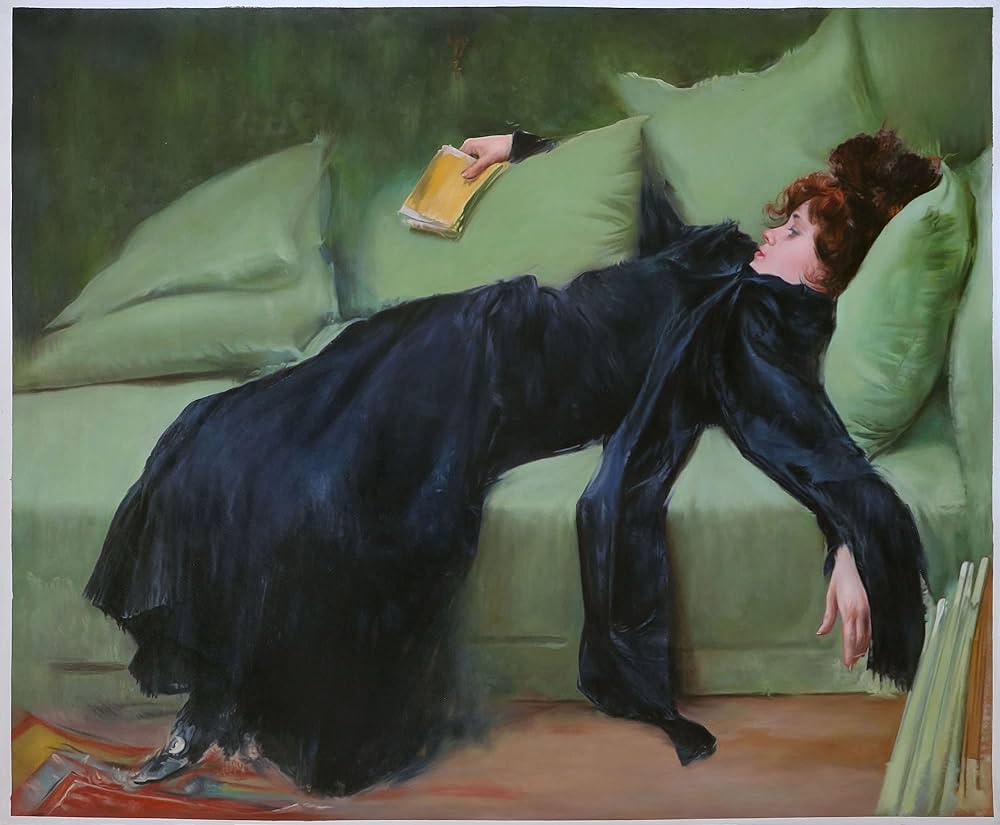
Ramon Casas, Decadent Young Woman. After the Dance, 1899, Museum of Montserrat, Barcelona, Spain.
Another intriguing collaboration between Ramon Casas and Madeleine at the Museum of Montserrat features the model reclining half-heartedly, or as the contentious title “After the Dance” might imply, after a night out. Some of us might as well view the painting and reflect on our late-night introspections after an exhausting social gathering. Recently, Selena Gomez did. The pop star credited the piece as an inspiration for her 2024 music video, “Love On (check 0:20 to see the reference).”

Pablo Ruiz Picasso, The Old Fisherman, 1895, Museum of Montserrat, Barcelona, Spain.
The Old Fisherman is an early work Picasso created while studying portraiture and genre painting. Picasso’s subject was a local sailor named Salmerón, whom his uncle hired as a model. With subdued colors and raw brushstrokes, the artist opted for realism instead of idealism to capture Salmerón’s weathered features. But besides the signs of age in Salmerón, Picasso made visible his weariness, inviting viewers to probe into his sophisticated inner world replete with struggles and hardships.
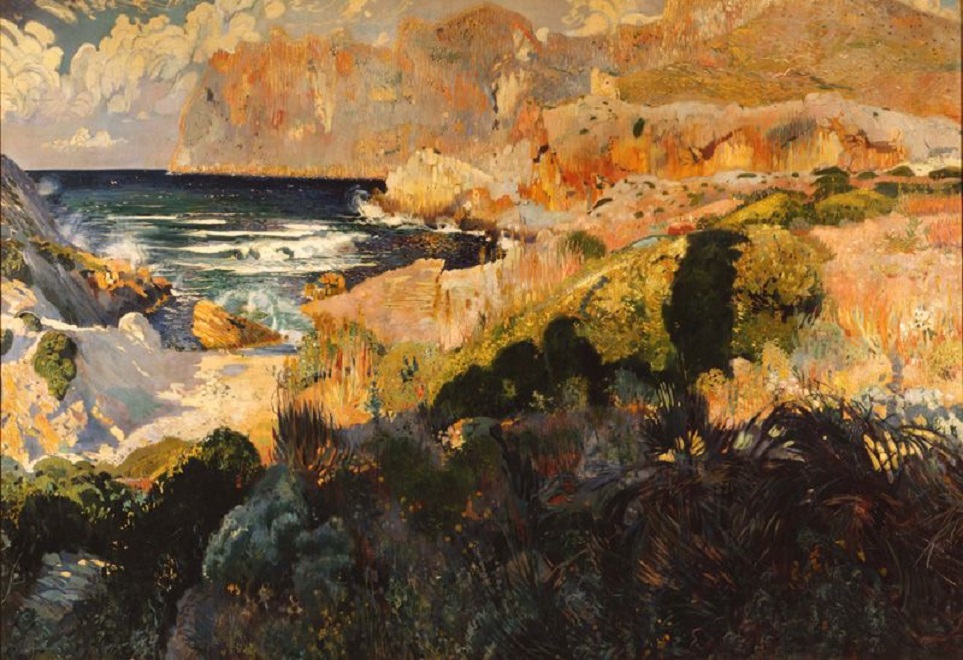
Joaquim Mir, Sant Vicenç’s Cove, Mallorca, 1902, Museum of Montserrat, Barcelona, Spain.
Catalan landscape virtuoso Joaquim Mir stands out for his unique approach unattached from Impressionist trends. Despite never setting foot in Paris, Mir breathed life into landscapes with his mastery of realistic depiction and an eye for capturing atmospheric nuances.
In addition to Mir’s skillful use of bold, vibrant colors and harmonious chromatic blends, Sant Vicenç’s Cove, Mallorca features occasional loose and fluid brushstrokes that infuse movement and vitality into the scene, along with a clever interplay of light and shadow.
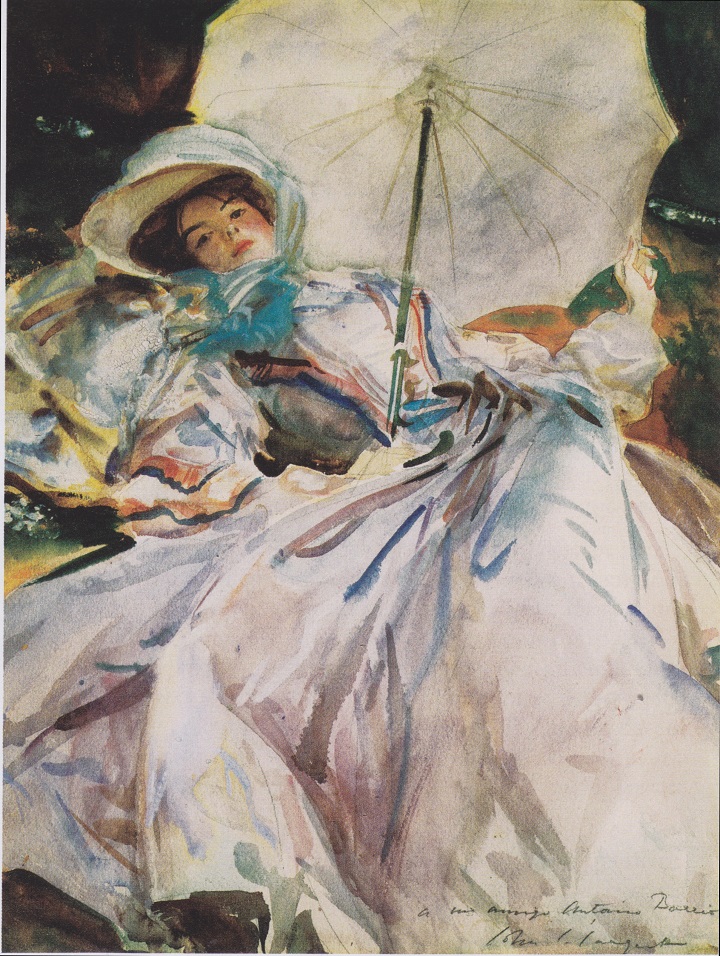
John Singer Sargent, The Lady with the Umbrella, 1911, Museum of Montserrat, Barcelona, Spain.
Sargent, renowned for his lavish oil portraits of Edwardian high society, was the go-to artist for the aristocrats and the elites. Yet, this watercolor reveals a different side of him, one shredding the constraints of formality. In the painting, a young woman is enveloped in cascades of lace and satin, holding a toppled parasol. The composition exudes an air of seduction.
The foreshortening invites viewers to delve into the mystery of her beautiful yet enigmatic face, who turned out to be Sargent’s niece, Rose-Marie Ormond. As one of the watercolors Sargent created during breaks from his prestigious oil commissions, this piece offers a glimpse into Sargent’s personality outside his commercial endeavors.
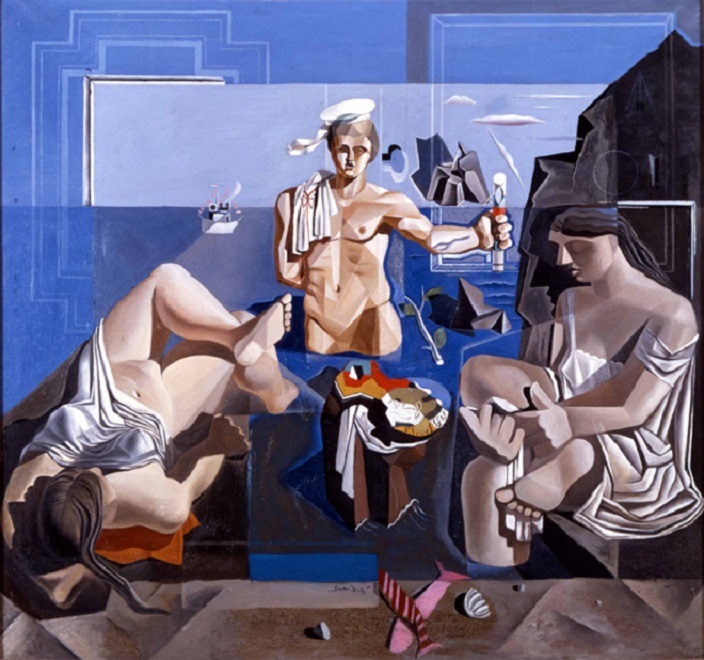
Salvador Dalí, Neo–Cubist Academy (Composition with Three Figures), 1926, Museum of Montserrat, Barcelona, Spain.
Amid the diverse array of works in the Museum of Montserrat is a painting from Salvador Dalí, or one of his earlier experiments before he became one of the most influential Surrealist painters. The geometric forms, fragmented shapes, and dynamic composition show a pronounced influence from Cubism. Three stylized figures inhabit a fractured and angular space. Besides these descriptors, it is hard to tell what message Dalí was trying to convey, and it is now up to us, the viewers, to decipher it.
The Museum of Montserrat is a testament to the rich artistic and archaeological legacy spanning centuries. From the masterpieces of El Greco and Caravaggio to the ones of Picasso and Dalí, the museum’s extensive art collection is bound to provide insights for art enthusiasts and become part of a memorable experience for anyone exploring Barcelona.
DailyArt Magazine needs your support. Every contribution, however big or small, is very valuable for our future. Thanks to it, we will be able to sustain and grow the Magazine. Thank you for your help!